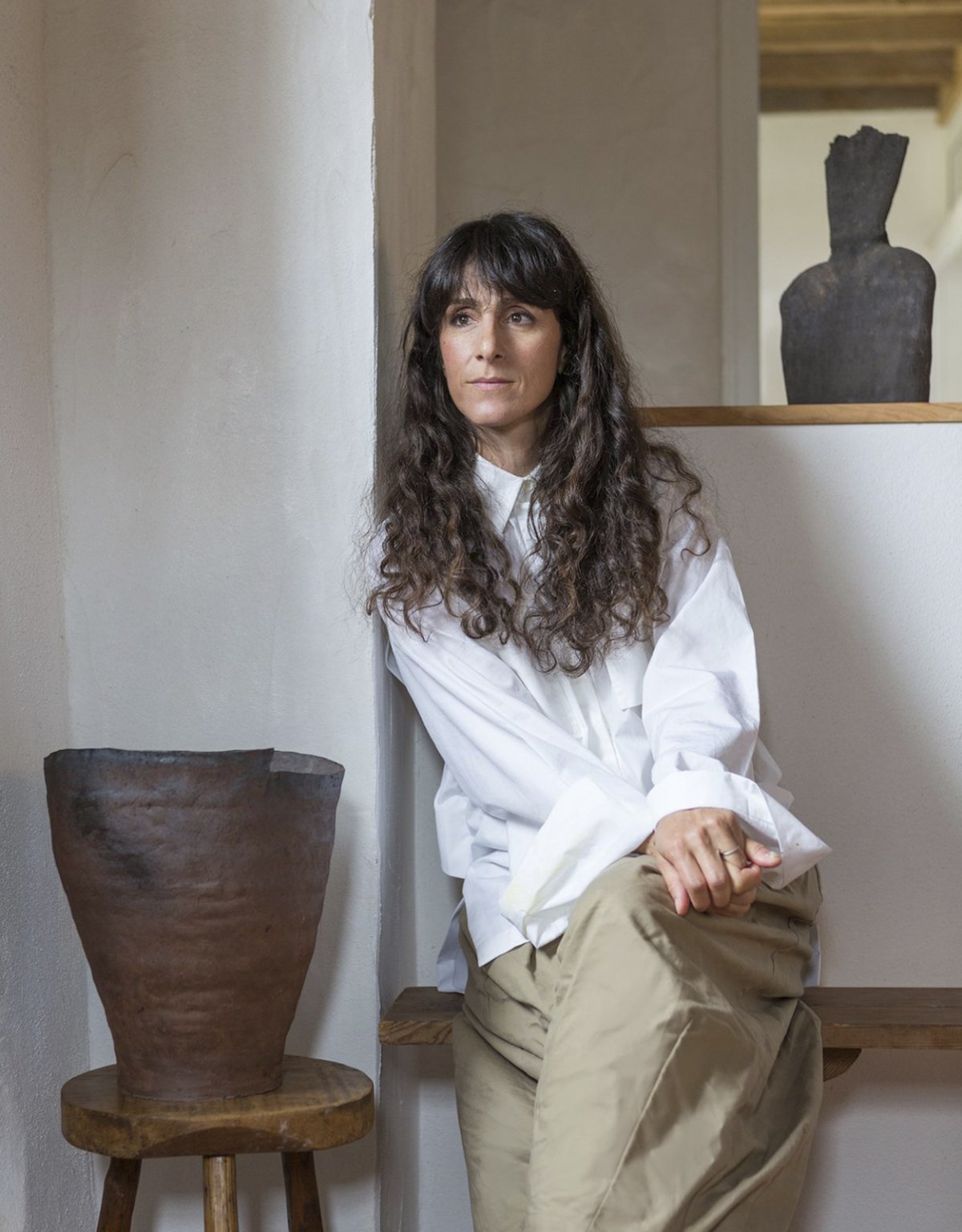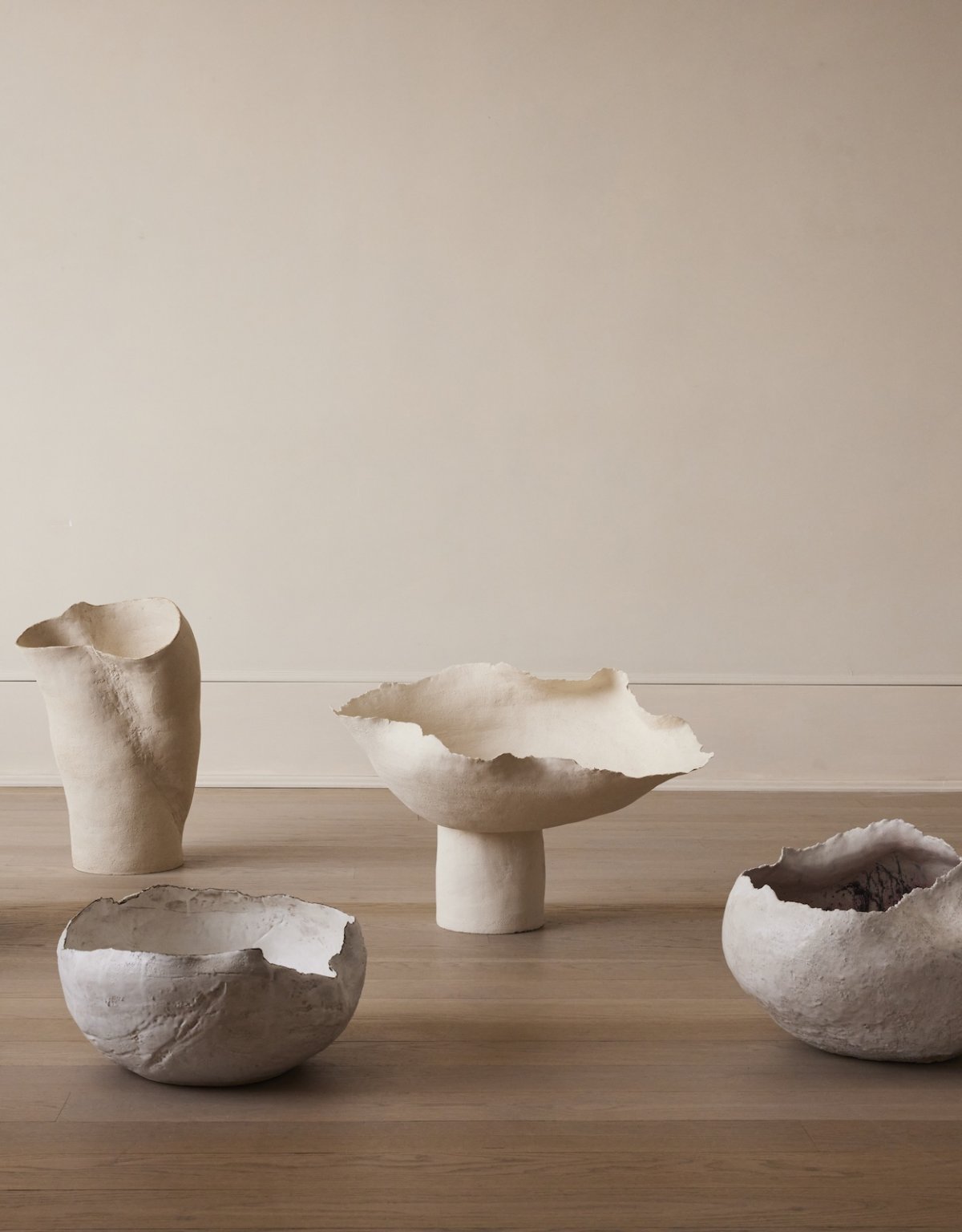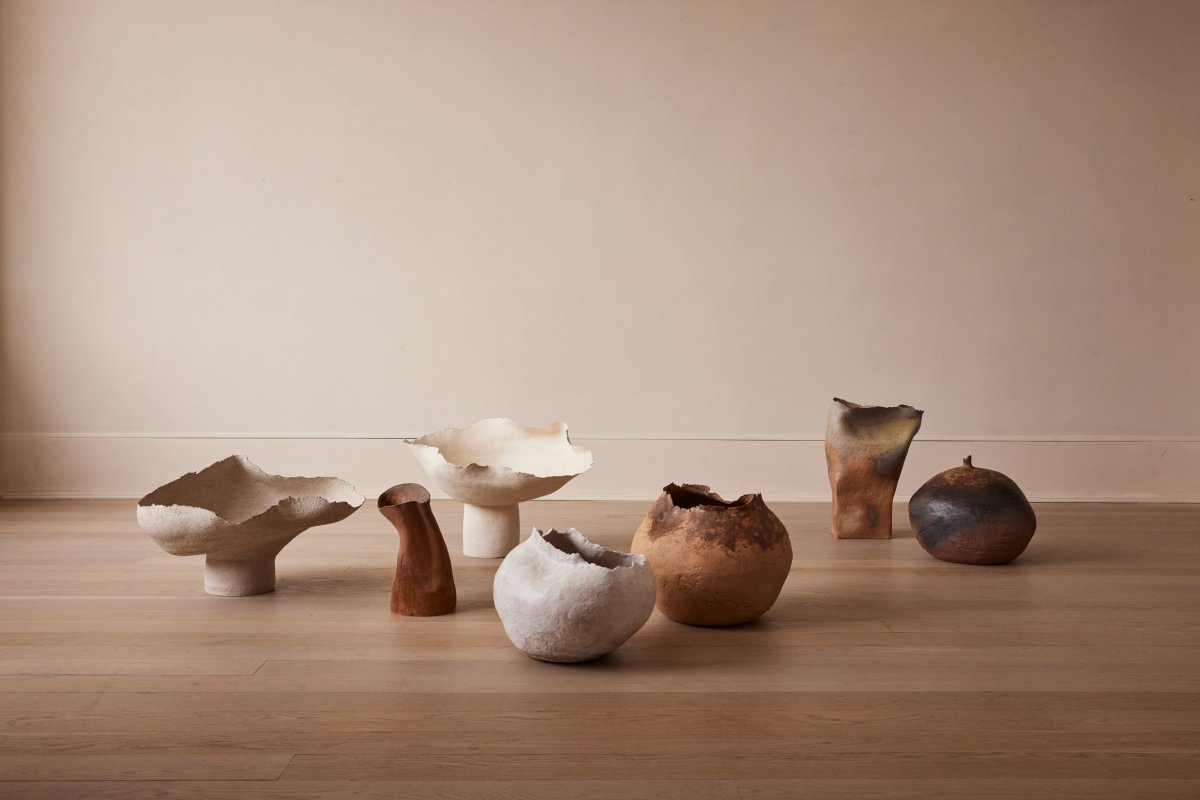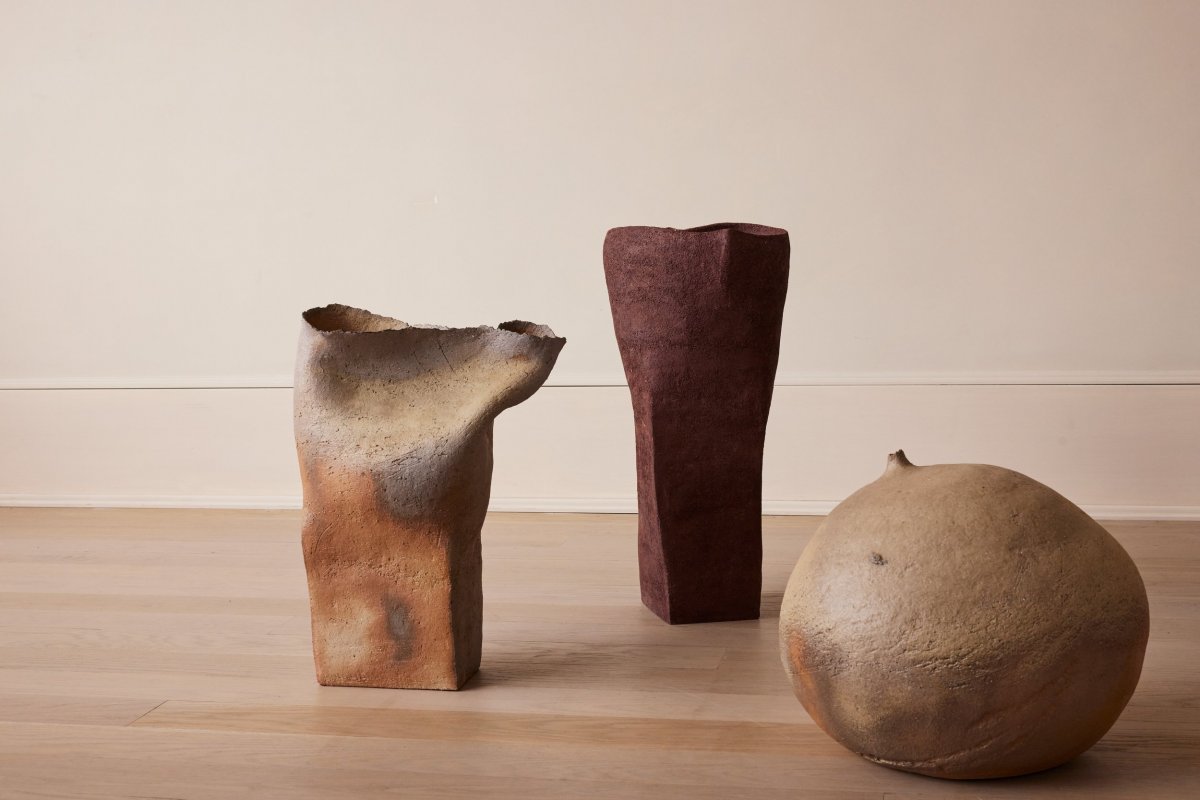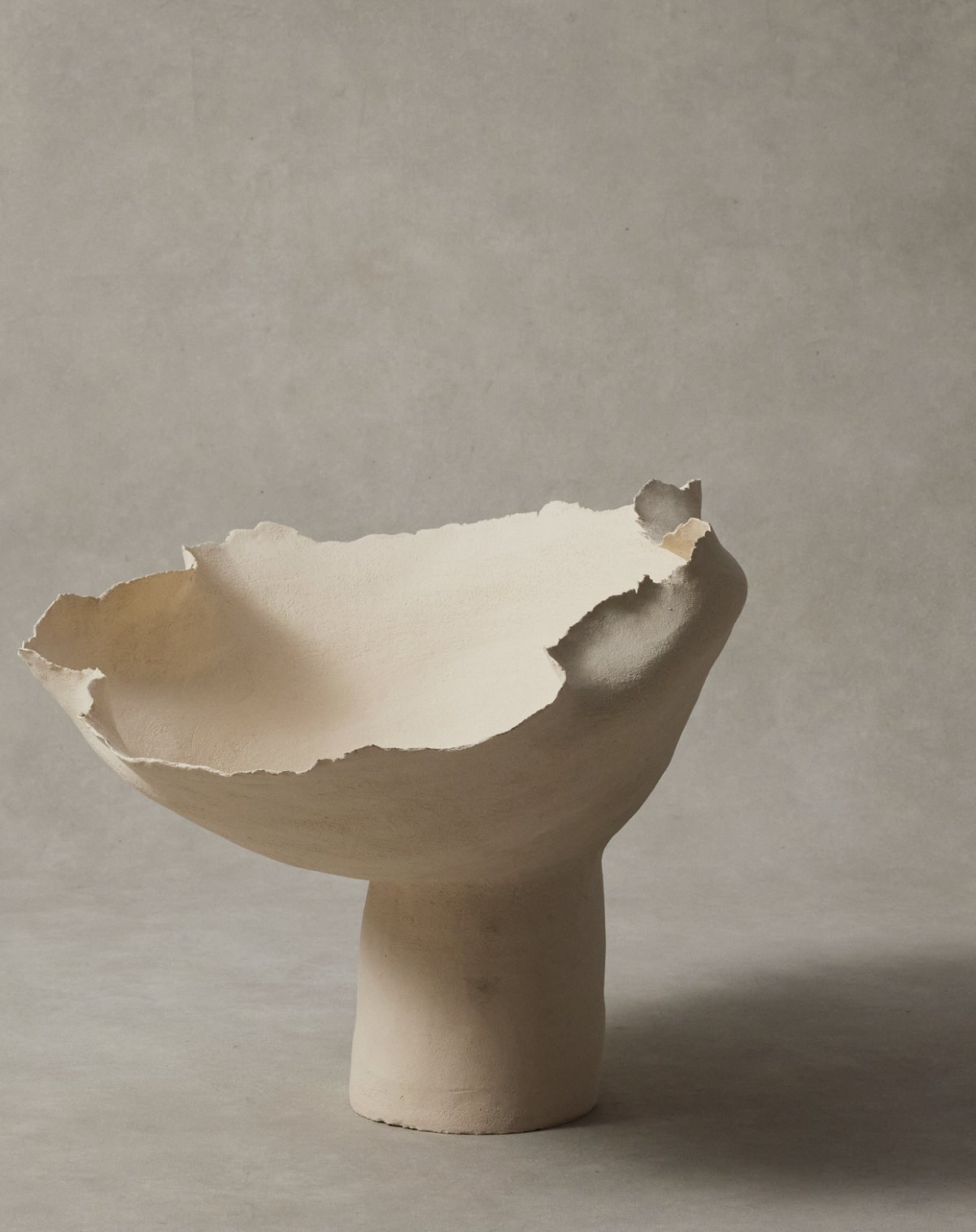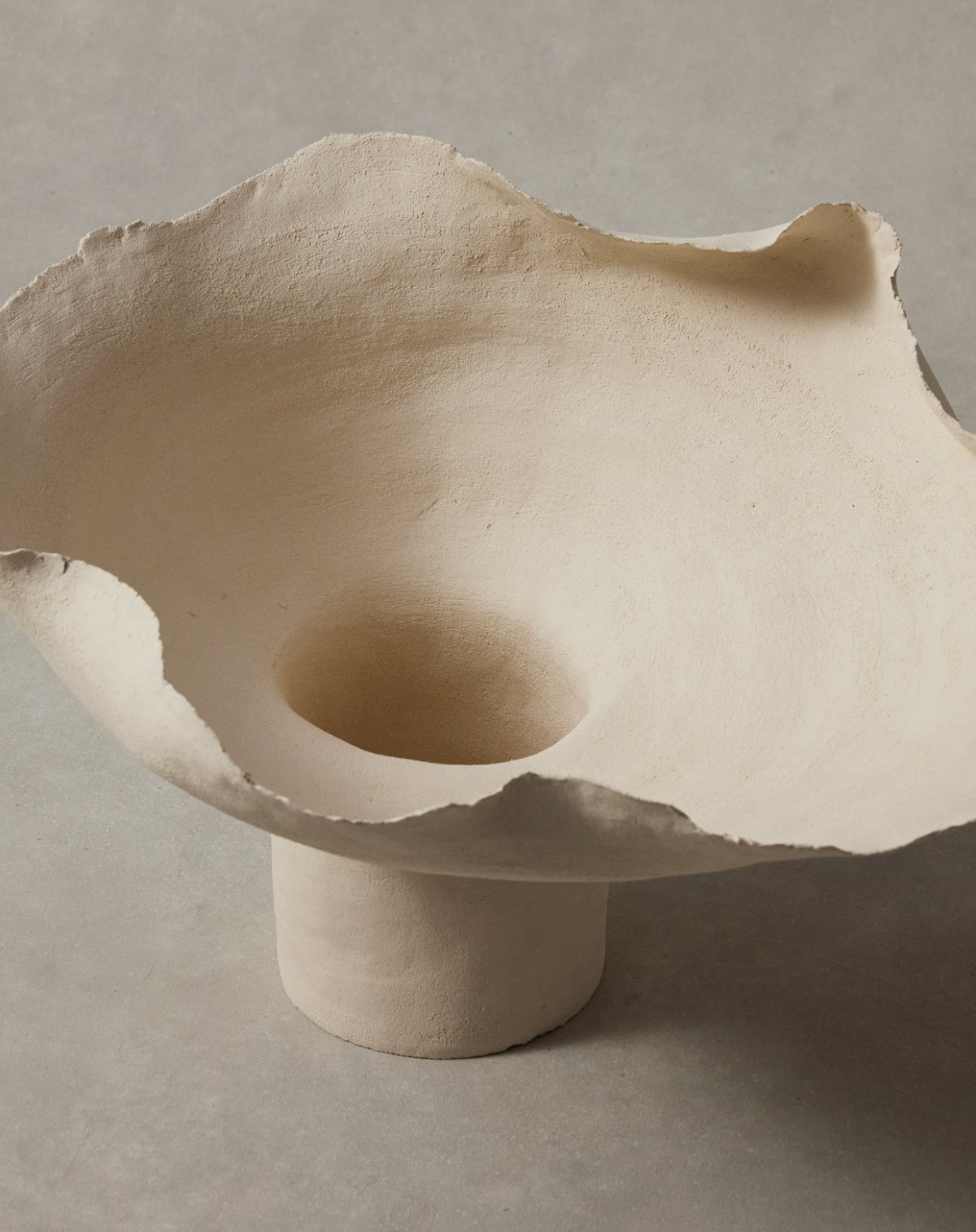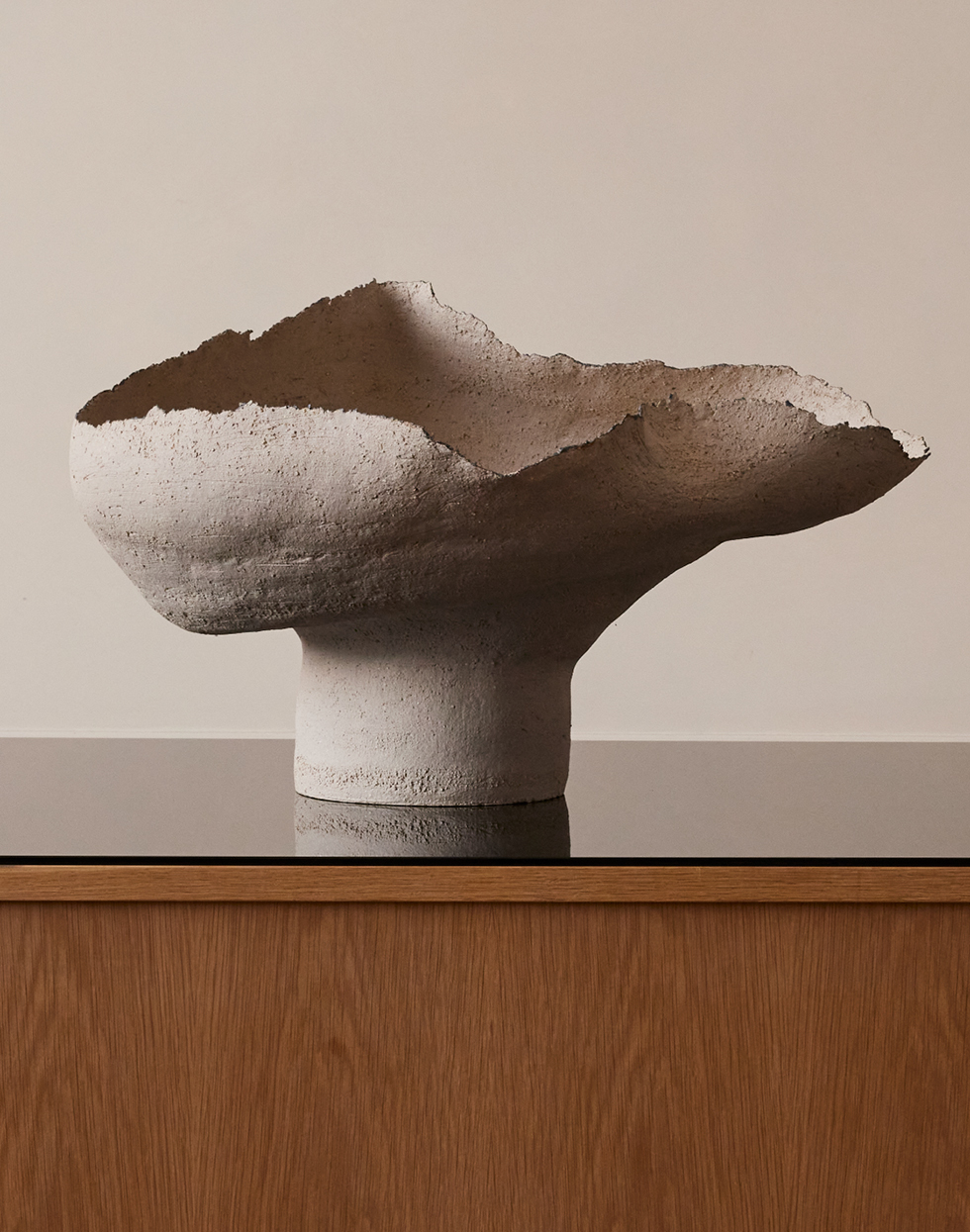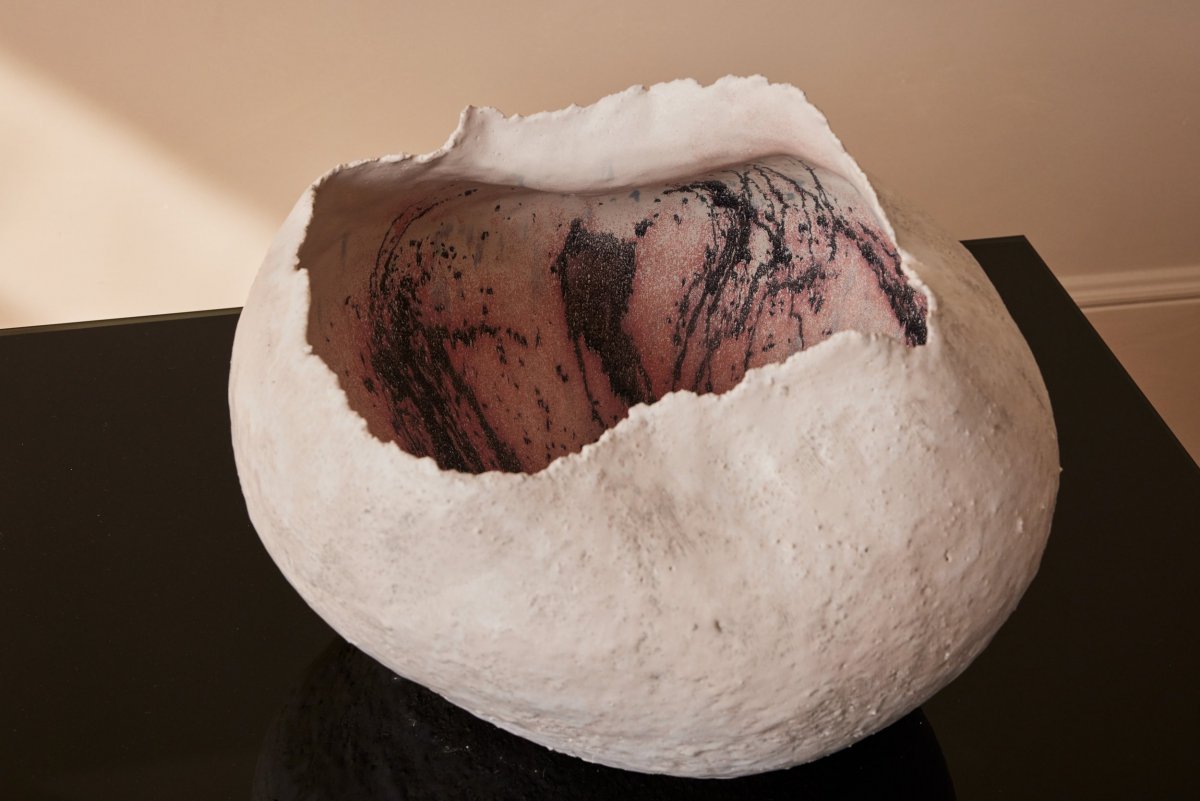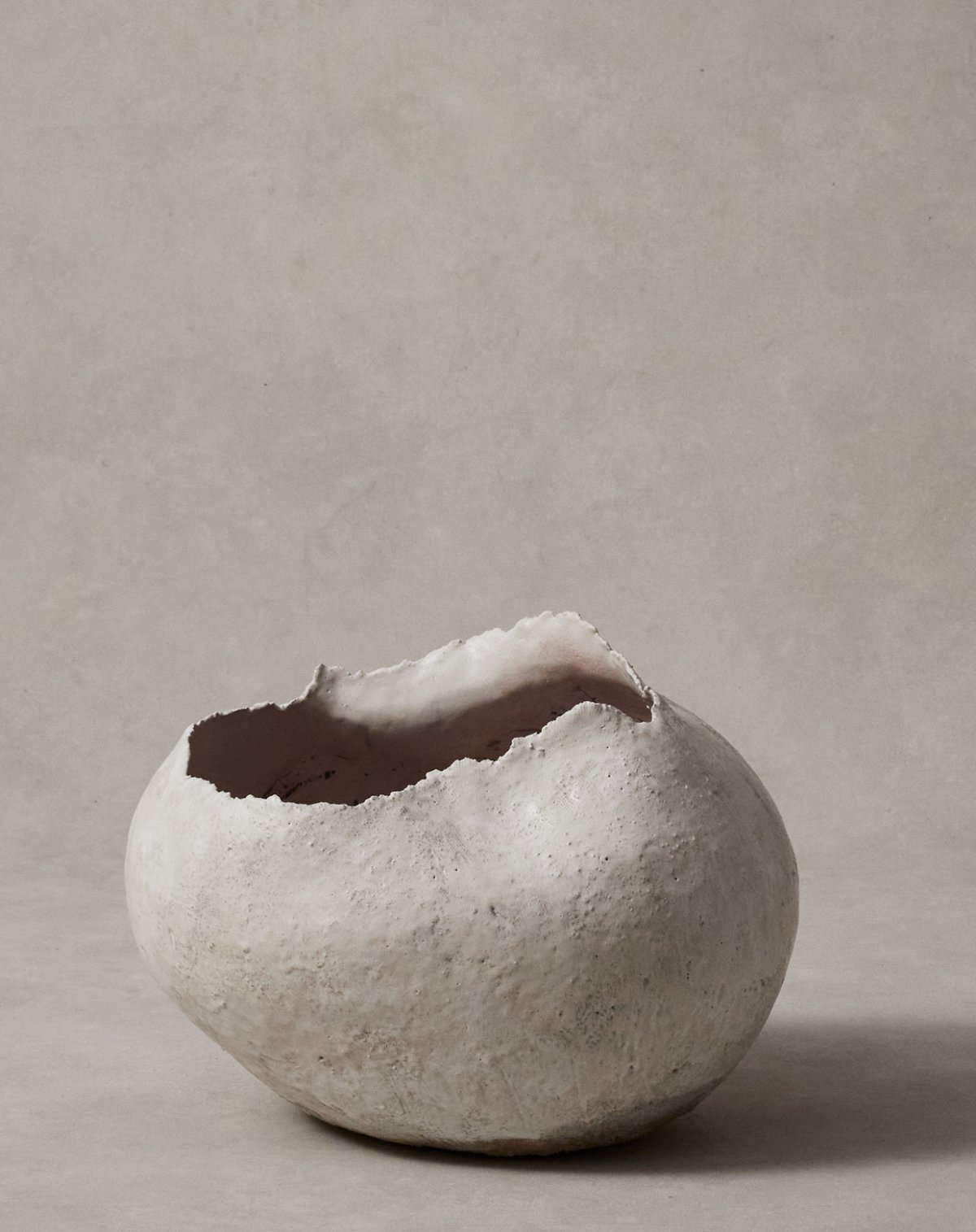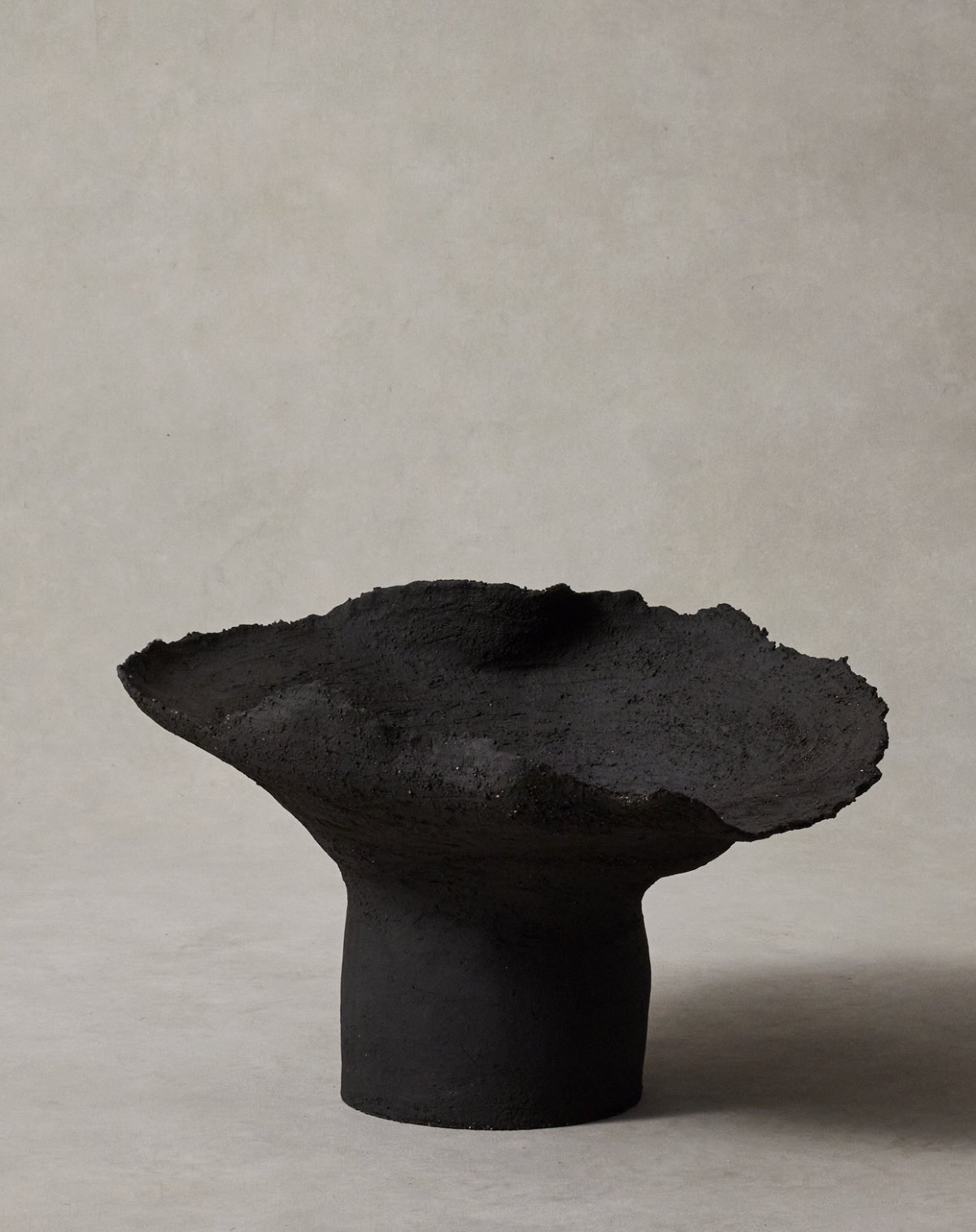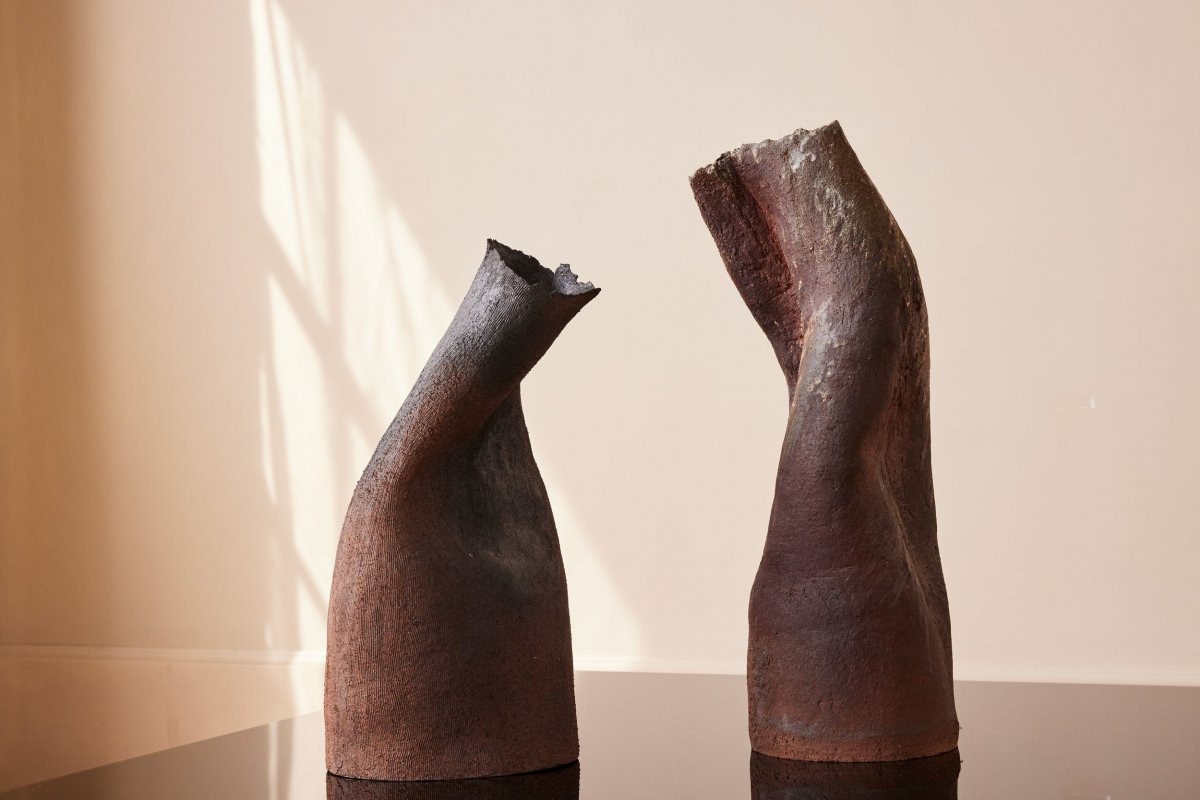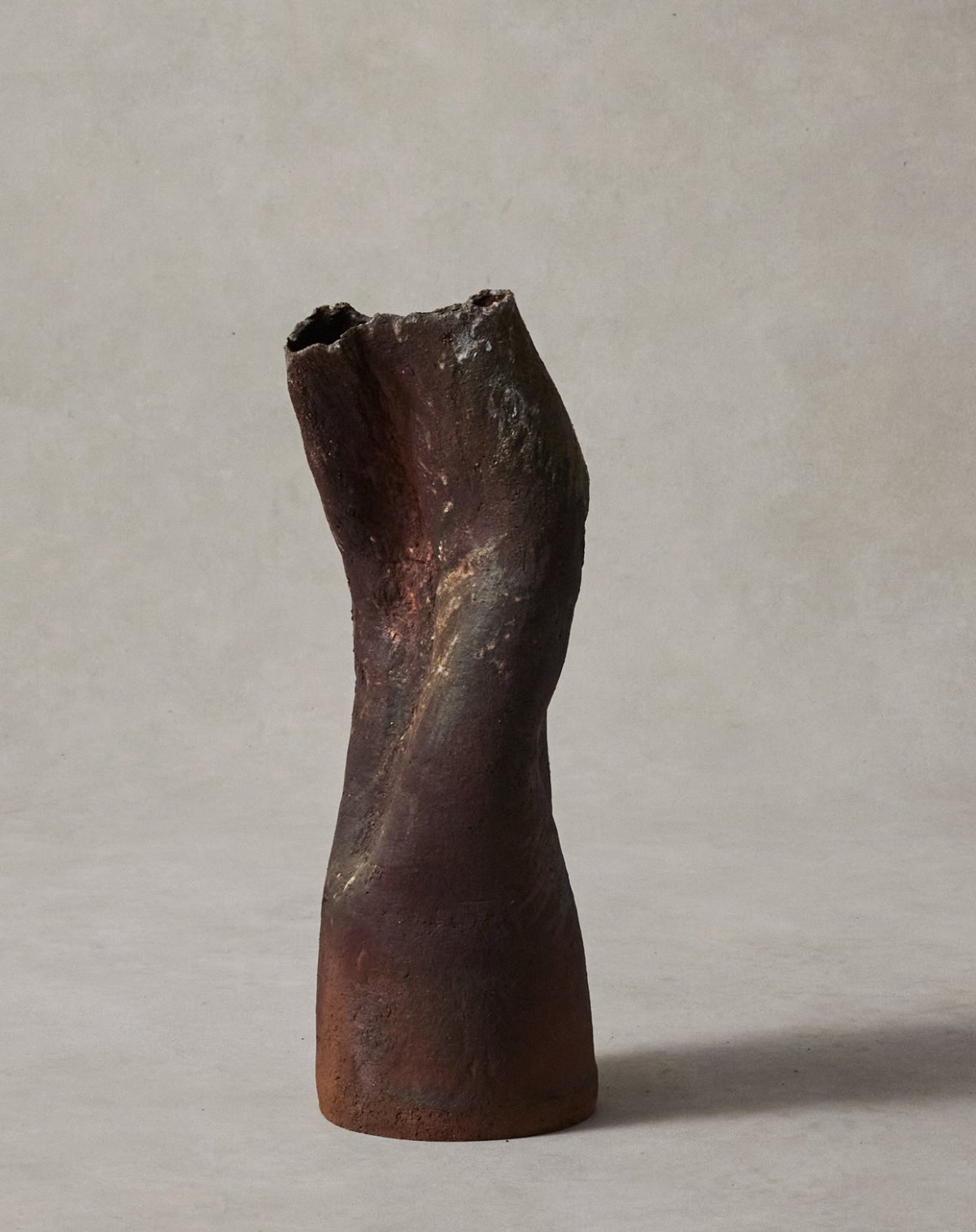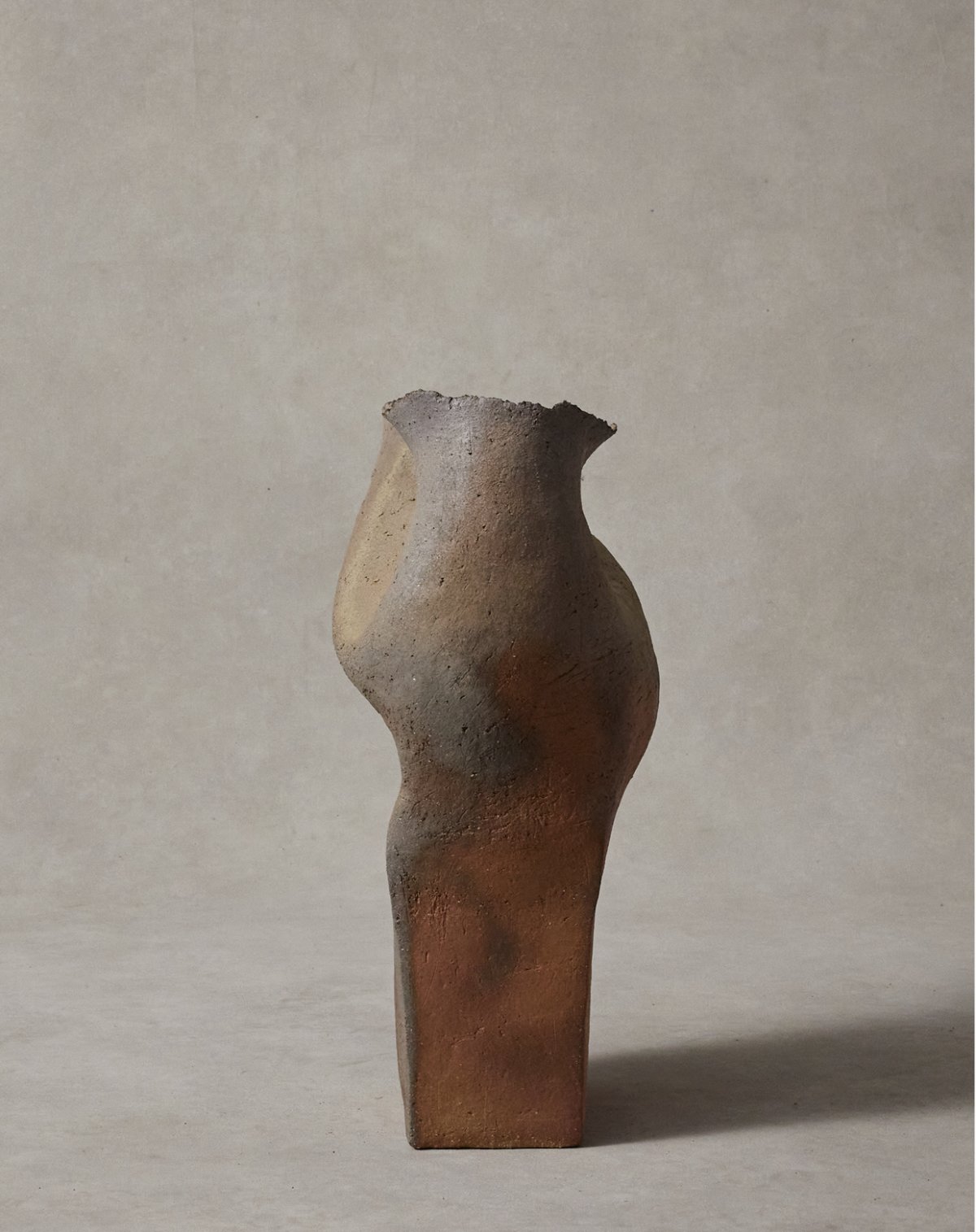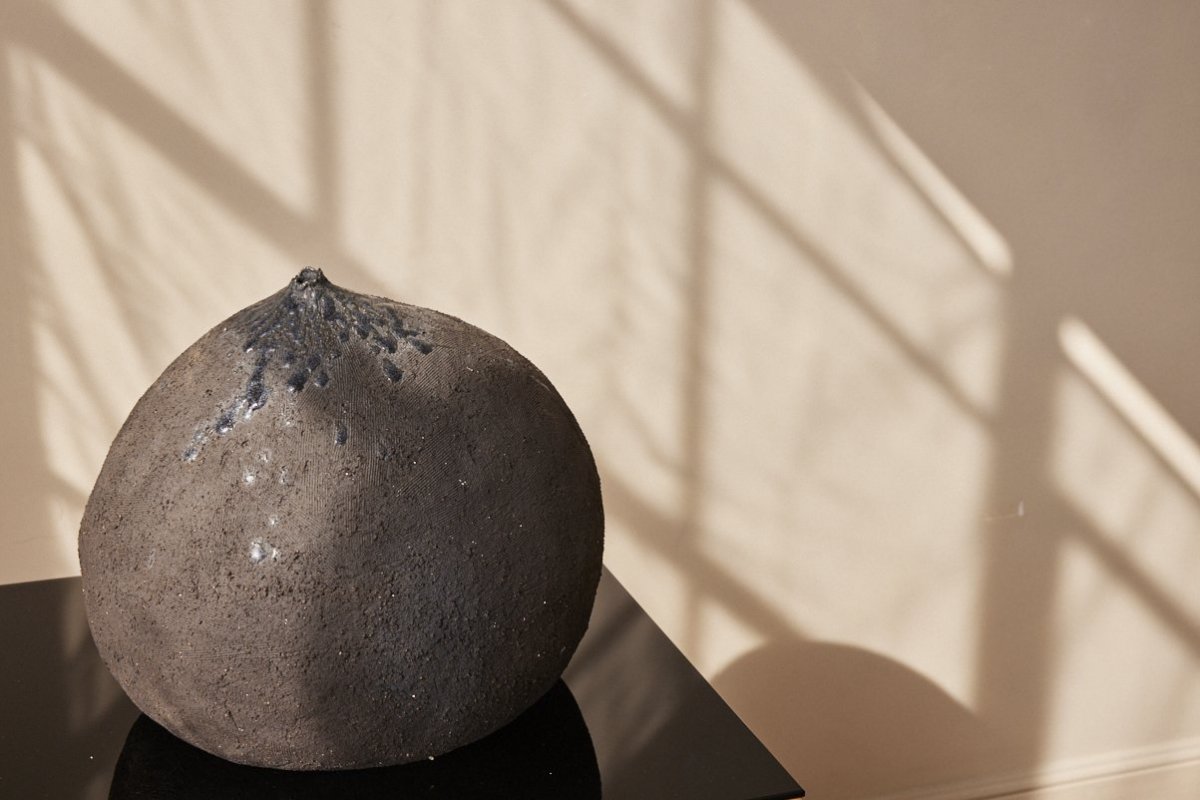粘土的历史是如此古老,它让我意识到生活与环境和人类历史息息相关。
Ludmilla Balkis1981年生于法国Domont,是一位陶瓷艺术家,她的作品曾在欧洲各地的画廊展出,包括巴黎、比亚里茨和柏林。Balkis曾在巴黎学习时装和艺术史,在那里她发现自己渴望重新定义社会与身体的关系。在转向陶艺创作之前,Ludmilla Balkis曾担任过多年的时装设计师,并与Phoebe Philo一起在伦敦的Celine工作过。
Ludmilla Balkis (b. 1981 Domont, France) is a ceramicist who has exhibited her work in galleries across Europe, including Paris, Biarritz, and Berlin. Balkis studied fashion and art history in Paris where she discovered her desire to redefine the relationship with the body in society. Before turning to ceramics, Balkis was a fashion designer for many years and worked at Céline in London with Phoebe Philo.
Balkis的作品植根于她与大自然的关系,展现了有机元素与粘土之间不断发展的对话,并将日本的烧制技术与她对服装设计的掌握相结合,创造出了自己的陶瓷语言。为了进一步与她周围的土壤进行对话,Balkis使用了她在日常散步中寻找的地质材料,用树灰、石头、树枝和矿物质来增加粘土碎片的表面。最后,Balkis经常在木窑中烧制陶瓷,让每件作品都暴露在火焰、烟雾、发光的煤炭和灰烬中,从而产生一系列天然釉料。
Rooted in her relationship to nature, Balkis’vessels present an evolving dialogue between organic elements and clay. Combining Japanese firing techniques with her command of clothing design, Balkis has defined her own language in ceramics. To further engage in a dialogue with the soil that surrounds her, Balkis uses geological materials that she forages on her daily walks, augmenting the surfaces of her clay pieces with tree ash, stones, sticks, and minerals. As a final step, Balkis often fires her ceramics in a wood kiln, which exposes each piece to flames, smoke, glowing coal and ash, producing a range of natural glazes.
Balkis对待陶瓷就像对待一块织物一样。每件作品的开始,她都会围绕着空洞进行手工制作,与试图填补空洞的粘土进行对话。正是从这种交流和紧张中,她的极简形式开始成形,表现为精致的雕塑和容器,它们处于静态的平衡和运动中,就像她周围的自然环境一样,即古老的Pyrenees山脉被时间之手雕刻得栩栩如生,树木在风、雨和光的作用下呈现出流动的形态,每一种形态都是永恒的运动。
Balkis approaches ceramics much like she would a piece of fabric. She begins each piece by handbuilding around the emptiness, creating a dialogue with the clay that seeks to fill the void. It is from this exchange and tension that her minimal forms begin to take shape, manifesting into delicate sculptures and vessels that are in static balance and movement much like her natural surroundings—the ancient Pyrenees mountains sculpted by the steadfast hand of time, the trees with their fluid forms, shaped by wind, rain, and light—each forms of perpetual movement.
